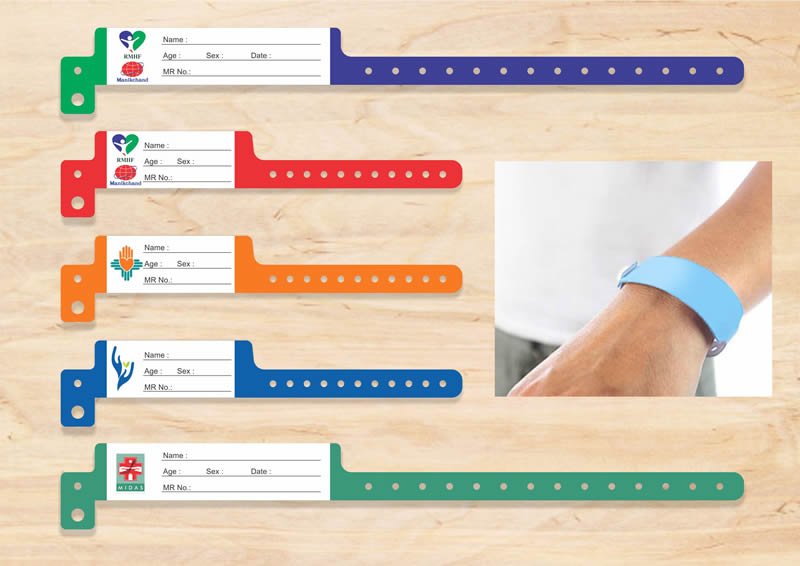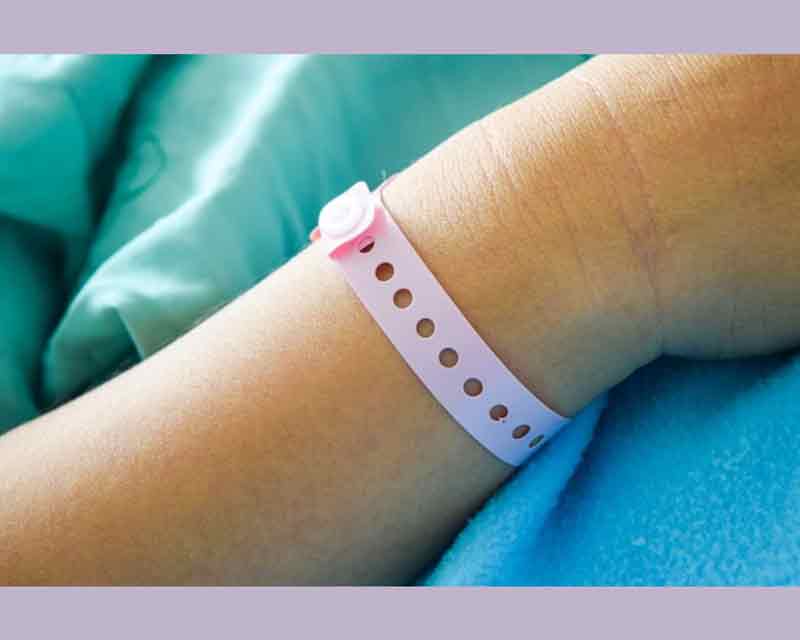Checking Out the Various Types of Patient Identification Band Utilized in Clinical Facilities
In the detailed world of medical care, the critical role of Patient Identification bands frequently goes unnoticed. These bands, varying from simple paper wristbands to advanced RFID bands, form the foundation of Patient safety and security methods, ensuring accuracy in Patient Identification.
Understanding the Significance of Patient Identification Bands
While they might feel like simple devices, Patient Identification bands play an important role in medical centers. These bands act as a critical tool for verifying Patient identification, preventing medical mistakes connected to misidentification. The bands usually present vital details such as the Patient's name, age, blood group, and any recognized allergic reactions. They enable medical care experts to swiftly access this critical information, therefore helping with timely and exact medical therapy. Patient Identification bands also help in enhancing administrative jobs, making certain exact record-keeping and billing. Regardless of their simpleness, these bands embody the concept of Patient safety, a cornerstone of top quality health and wellness treatment. Without them, the threat of medical errors, and consequently, Patient injury, could considerably enhance.
Typical Paper Wristbands: Their Use and Limitations
Typical paper wristbands have actually been a staple in Patient Identification throughout numerous medical facilities. While their use is prevalent, they harbor certain constraints that may impact their performance in Patient administration. This area will certainly concentrate on the scope of their application and the fundamental downsides connected with their usage.
Paper Wristbands: Usage Scope
In the realm of Patient Identification, paper wristbands have actually long held an important role. These bands are normally made use of in outpatient setups, where the Patient's remain is short-lived. Regardless of developments in innovation, the humble paper wristband stays a cost-effective and trusted solution for Patient Identification in numerous medical care scenarios.
Limitations of Paper Wristbands
Despite their prevalent use, paper wristbands are not without their downsides. In addition, paper wristbands frequently do not have the technological capabilities of even more contemporary choices, such as barcoding or RFID chips, restricting their performance to just presenting created details. Paper wristbands can cause pain or skin irritation to some patients, specifically when used for extended periods.
Barcoded Wristbands: Developments in Patient Identification
While Patient Identification has actually long been an important aspect of health care, the introduction of barcoded wristbands indicates a significant jump onward. These bands leverage the simpleness of barcoding modern technology, permitting Patient information to be swiftly scanned and accessed. They enhance the rate and precision of Patient Identification, lowering the danger of clinical errors related to misidentification. Barcoded wristbands are affordable, simple to produce, and get rid of handwriting errors usual with manual systems. They are not helpful hints without restrictions. While they offer enhancements over standard bands, the barcode can come to be worn or smudged, making it unreadable. Regardless of this, barcoded wristbands continue to be an important device in modern healthcare setups, signifying the intersection of technology and Patient treatment.
Radio Frequency Identification (RFID) Bands: an Action Towards Futuristic Medical Care
The development of Patient Identification bands has actually caused the development of Radio Regularity Identification (RFID) Bands (patient identification band). These ingenious gadgets existing key benefits for medical care centers, supplying a more reliable and highly advanced methods of Patient Identification. The implementation of RFID in health care is a considerable action in the direction of a much more futuristic approach to Patient administration and safety
Understanding RFID Bands

RFID Bands: Secret Benefits
Largely, these bands boost Patient safety and security by giving exact, rapid Identification, thus reducing clinical errors. RFID bands can store a vast quantity of Patient information, including clinical background and allergies, making it possible for customized treatment. Overall, RFID bands represent a substantial improvement in Patient Identification technology, benefiting both individuals and health care carriers.
Executing RFID in Health Care
As we enter a technologically innovative era, this the application of RFID bands in healthcare comes to be increasingly vital. These bands give a seamless method to track and identify individuals, guaranteeing their safety and enhancing efficiency in therapy procedures. RFID bands provide countless benefits over typical Identification methods. They can save a huge quantity of information, consisting of the Patient's case history and treatment plans, which can be quickly accessed by doctor. This data helps doctors make notified decisions pertaining to the Patient's therapy strategy. RFID bands decrease clinical errors by supplying accurate Patient Identification, which is vital in avoiding misdiagnosis or incorrect medication administration. Therefore, the execution of RFID bands is a significant step towards boosting Patient safety and security and healthcare delivery.

Color-Coded Wristbands: Helping in Quick and Accurate Diagnosis
In the dynamic environment of a clinical center, color-coded wristbands have arised as essential tools for swift and accurate Identification of a client's clinical condition. These wristbands, worn by individuals, bring specific shades that correspond to various clinical problems or statuses. This system is made to supply instant visual cues to medical care carriers, enhancing Patient safety and security and care high quality.
Methods for Effective Application and Monitoring of Patient ID Bands
Attaining optimum usage of Patient Identification bands requires a well-structured method for their application and administration. Patient education and learning is likewise critical; patients need to recognize the function of the bands and the requirement for their continuous wear. It's important to have a back-up plan in area, such as barcode scanning or biometrics, to guarantee that Patient Identification is never compromised.
Conclusion
Patient Identification bands are critical in clinical facilities to guarantee security and accuracy. Effective execution and monitoring useful content of these bands can significantly reduce medical errors, increase performance, and boost overall Patient care.
These bands, varying from straightforward paper wristbands to innovative RFID bands, create the backbone of Patient security methods, guaranteeing accuracy in Patient Identification.The development of Patient Identification bands has brought about the appearance of Radio Frequency Identification (RFID) Bands. Overall, RFID bands stand for a significant advancement in Patient Identification innovation, benefiting both patients and health care providers.
RFID bands reduce medical errors by giving accurate Patient Identification, which is important in stopping misdiagnosis or wrong medicine administration. Patient education is also critical; clients need to recognize the function of the bands and the demand for their constant wear.